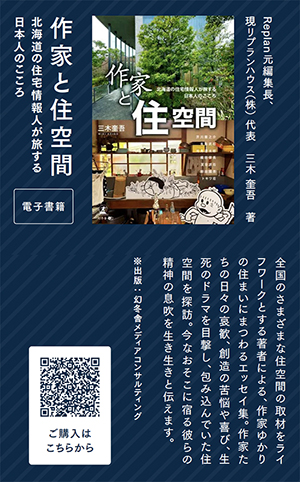
石見銀山の歴史探訪をしていて、その発見譚からその当時の地域政治経済動向について知らねばならなくなる。日本史の学習ではほとんど触れられることがない領域。日本の歴史の「主流」としてはその後の天下統一過程の進展が主で、対明交易で栄えた長門国の「大内文化」などにはほぼ無関心。
なんとなく大内氏・大内義隆(1507〜1551年)とその軍事指導者であった陶氏、出雲を本拠とする尼子氏、そして最終的な勝利を得た安芸の毛利氏などの戦国争乱の様子がひとつの「地方権力争闘」と知られているに過ぎない。本格的に踏み込んでいくためには大陸半島との交易拠点としての北部九州経済の支配について、その争闘史を視野に入れていく必要がある。見ているとどうも太宰府の支配権という方向が大きな志向性になっている。東に向かうより西からさらに半島−大陸への意図を感じる。大内氏は渡来人の多々良氏を祖先とする家系伝承を持っていることが関係しているのか?
大内文化という形でいまに伝えられている戦国期の繁栄ぶりが、その基盤として石見銀山が大きな動因であったことがポイント。実際に石見銀山の開発が大内氏の主導の元で進められ、それが大いに進展すると同時に、この中国地域の権力争闘、領国争いが激化したことがすべてを表していると言える。大内氏の「最大版図」を上に図示したが、これほどに繁栄した戦国大名家が、その後崩壊していく。まことに栄枯盛衰、盛者必衰の理。信長(1534〜1582年)の勃興と反比例して大内義隆の没落が好対照と言える。関東の北条氏と同様の武家としての運命。


こちらは「石見銀山センター」の展示説明資料から。石見銀山からの鉱物資源は馬路に近い日本海に面する「鞆ケ浦」まで陸路を通って運び出され船で交易ルートに送られた。見たような版図を持っていた大内氏なので、後の信長−秀吉−家康のような中央権力樹立も可能性はあったと妄想もできる。それだけの経済基盤は構築できていた。幕末期にはこうした地域としての「喪失・残念感」をバネに高杉晋作らのような野望がやがて成就していったのだとも思えてくる。日本史の地域間抗争のひとつの断面か。
●お知らせ
拙書「作家と住空間」幻冬舎から電子書籍で発刊
お求めはAmazonで。
https://amzn.asia/d/eUiv9yO

English version⬇
The Ouchi Clan in the Warring States Period: Could They Have Unified the Nation? Iwami Ginzan, a World Heritage Site -3]
If history has an IF, the possibility of nationwide domination by the Ouchi clan, a regional power that gained wealth from the Iwami Ginzan Silver Mine, comes to mind. Could it be a springboard for the spirit of the Choshu clan at the end of the Edo period? ...
During the historical exploration of Iwami Ginzan Silver Mine, the tale of its discovery makes it necessary to know about the local political and economic trends of the time. This is an area that is rarely touched upon in the study of Japanese history. The “mainstream” of Japanese history is mainly concerned with the subsequent development of the process of unification of Japan, and is almost indifferent to such things as the “Ouchi Culture” of Nagato Province, which flourished through trade with Ming Dynasty China.
The warring clans of Ouchi Yoshitaka (1507-1551), his military leader the Tō clan, the Izumo-based Amago clan, and the ultimately victorious Mori clan of Aki are known only as "local power struggles. In order to go deeper, it is necessary to look at the history of the struggle for control of the economy of northern Kyushu as a trading center with the continental peninsula. Looking at it, it seems that the major orientation is in the direction of control of Dazaifu. Rather than heading eastward, one senses an intention to move further westward to the peninsula and continent. Is this related to the fact that the Ouchi clan has a family tradition that traces its ancestry back to the Tadara clan, who came to Japan from another country?
The prosperity of the Warring States period, which has been handed down to the present in the form of the Ouchi Culture, is based on the Iwami Ginzan Silver Mine, which was a major driving force behind the prosperity of the Warring States period. In fact, the development of Iwami Ginzan Silver Mine was promoted under the leadership of the Ouchi Clan, and as it made great progress, the struggle for power and territorial disputes in the Chugoku region intensified, which shows the whole picture. The above figure shows the “largest version” of the Ouchi clan, but this prosperous family of warring feudal lords later collapsed. It is a true fact that rise and fall, prosperity and decline are inevitable. The rise of Nobunaga (1534-1582) and the fall of Ouchi Yoshitaka are in sharp contrast. The fate of the Ouchi Yoshitaka clan was similar to that of the Hojo clan in Kanto.
This is from the Iwami Ginzan Silver Mine Center's exhibition explanatory material. Mineral resources from Iwami Ginzan were transported overland to “Tomogaura” facing the Sea of Japan near Umaji and sent by ship to the trade route. Since the Ouchi clan had such a large area under their control, it is possible to imagine that they could have established a central power like Nobunaga, Hideyoshi, and Ieyasu did later. The Ouchi clan had established a strong economic foundation. It seems to me that the sense of “loss and disappointment” of the region at the end of the Tokugawa shogunate was the springboard from which the ambitions of Takasugi Shinsaku and others were eventually fulfilled. Is this a cross-section of the interregional strife in Japanese history?
Notice
My book “Writers and Residential Space” is published by Gentosha as an e-book.
Please visit Amazon to purchase the e-book.



























※コメント投稿者のブログIDはブログ作成者のみに通知されます